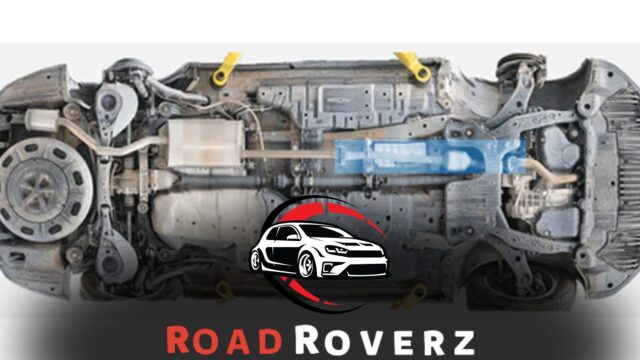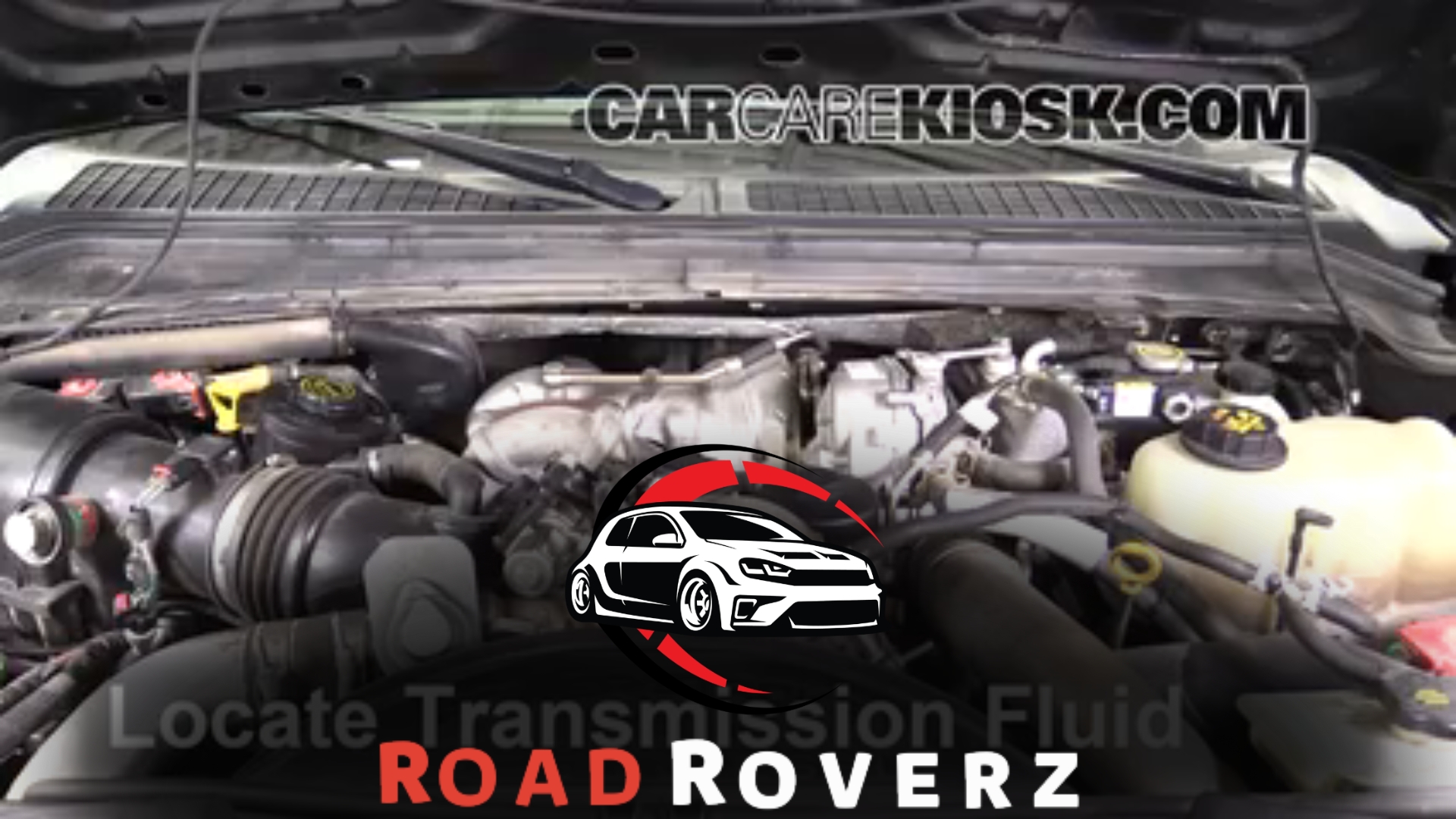A Ford F250 typically has two catalytic converters. The catalytic converters in a Ford F250 are crucial components of the vehicle’s exhaust system.
Responsible for reducing harmful emissions, these devices play a vital role in preserving air quality and adhering to environmental regulations.
With two catalytic converters, the Ford F250 ensures optimal emission control, allowing it to operate efficiently while minimizing environmental impact.
Understanding the number and function of these converters is essential for maintaining the vehicle’s performance and ensuring compliance with emission standards.
The Ford F250 demonstrates Ford’s commitment to environmental sustainability and responsible vehicle manufacturing by having two catalytic converters.
Understanding the Catalytic Converter System in a Ford F250

The Ford F250 has two catalytic converters in its exhaust system, which are responsible for reducing harmful emissions.
By understanding the catalytic converter system, drivers can ensure their vehicle runs efficiently and comply with emissions regulations.
The Function of the Catalytic Converter in a Vehicle
- Reduces harmful emissions: The catalytic converter reduces the amount of dangerous pollutants released into the atmosphere through a vehicle’s exhaust system.
- Converts toxic gases: It converts poisonous gases such as carbon monoxide, nitrogen oxides, and hydrocarbons into less harmful substances like carbon dioxide, nitrogen, and water vapor.
- Enhances engine performance: The catalytic converter helps optimize engine performance and fuel efficiency by efficiently converting harmful gases.
A Brief Overview of How It Works in a Ford F250
- Location: The Ford F250 has two catalytic converters, one located on each side of the exhaust system.
- Emission control: The catalytic converter works with the engine to control emissions by combining chemical processes.
- Three stages: The catalytic converter operates in three stages: reduction, oxidation, and control.
- Reduction: The catalytic converter reduces nitrogen oxides into nitrogen and oxygen through chemical reactions.
- Oxidation: Unburned hydrocarbons and carbon monoxide are oxidized into carbon dioxide and water vapor.
- Control: The catalytic converter continuously monitors the oxygen levels in the exhaust gases to ensure optimal performance.
By understanding the function and operation of the catalytic converter system in a Ford F250, you can appreciate its role in reducing harmful emissions and improving engine performance.
Benefits of Having Multiple Catalytic Converters
The Ford F250 is equipped with multiple catalytic converters, offering numerous benefits. These converters help to reduce emissions, improve engine performance, and ensure compliance with environmental regulations.
The vehicle can achieve optimal exhaust purification with multiple converters, resulting in a cleaner and more efficient operation.
Introduction to the Potential Benefits of Having Multiple Catalytic Converters
Having multiple catalytic converters in a Ford F250 can offer a range of benefits beyond just complying with emission regulations. These benefits include increased efficiency, better emissions control, and reduced harmful pollutants.
By understanding these advantages, you’ll realize why multiple catalytic converters are valuable to your vehicle.
Increased Efficiency and Better Emissions Control
- Enhanced exhaust flow: Multiple catalytic converters help improve the flow of exhaust gases, allowing the engine to operate more efficiently. This results in better fuel economy and overall performance.
- Optimal catalyst temperature: With several converters, each unit can maintain an ideal catalyst temperature, ensuring efficient conversion of harmful gases into less toxic compounds.
- Improved combustion: Multiple catalytic converters contribute to a more complete combustion process, reducing wasted fuel and optimizing engine efficiency.
Reducing Harmful Pollutants and Meeting Regulatory Standards
- Enhanced pollutant conversion: Multiple catalytic converters allow more pollutant conversion. As the exhaust gases pass through each unit, various pollutants such as carbon monoxide (CO), nitrogen oxides (NOx), and hydrocarbons (HC) are effectively reduced.
- Meeting emission standards: With stricter emission regulations, multiple catalytic converters ensure your Ford F250 meets or exceeds the required emission standards. This can save you from potential fines and penalties.
Having multiple catalytic converters in your Ford F250 offers numerous benefits. It enhances efficiency, improves emissions control, reduces harmful pollutants, and ensures compliance with regulatory standards.
Understanding these advantages can help you make informed decisions about maintaining and optimizing your vehicle’s catalytic converter system.
So, explore these benefits and enjoy a more efficient and eco-friendly driving experience with the power of multiple catalytic converters.
Number and Placement of Catalytic Converters in the Ford F250
The Ford F250 has two catalytic converters on each side of the vehicle’s exhaust system. These converters are crucial in reducing harmful emissions and ensuring efficient engine performance.
The Number of Catalytic Converters Typically Found in A Ford F250
- There are generally two catalytic converters installed in a Ford F250.
- The dual catalytic converter system in the F250 is designed to increase exhaust gas purification.
- These catalytic converters help reduce harmful emissions by converting harmful pollutants into less toxic substances.
- One catalytic converter is usually located near the engine’s exhaust pipe, while the second is further down the exhaust system.
Explanation of the Placement of Catalytic Converters in the Exhaust System
- The first catalytic converter, known as the “pre-catalytic converter,” is located close to the engine, often found directly after the exhaust manifold.
- Placing the pre-catalytic converter near the engine ensures quick activation and optimal performance.
- The second catalytic converter, known as the “main catalytic converter,” is positioned further down the exhaust system, closer to the vehicle’s rear.
- This placement allows the exhaust gases to flow through the pre-catalytic converter first, followed by the main catalytic converter, maximizing emission reduction.
Variations Based on Different Model Years or Engine Configurations
- Depending on the specific model year and engine configuration of the Ford F250, there may be slight variations in the number and placement of catalytic converters.
- Some older F250 models may only have a single catalytic converter, while newer models typically include two for enhanced emissions control.
- Engine configurations, such as diesel or gasoline, can also affect the location and number of catalytic converters in the F250.
- It’s crucial to consult the vehicle’s manual or a certified technician to determine the precise number and placement of catalytic converters based on the Ford F250 model and engine option.
A Ford F250 generally comes equipped with dual catalytic converters placed strategically in the exhaust system to ensure effective emission reduction. While the pre-catalytic converter is located near the engine, the main catalytic converter is positioned further down the exhaust system.
However, the number and placement of catalytic converters may vary depending on the model year and engine configuration of the F250.
As always, it’s essential to refer to the vehicle’s manual or seek professional advice for accurate information tailored to your Ford F250 model.
Factors Affecting Catalytic Converter Configuration
Several factors, including engine size, emissions standards, and vehicle model year, influence catalytic converters’ configuration in a Ford F250.
These factors determine the number and placement of catalytic converters to achieve optimal emission control and compliance.
Factors Considered in Determining the Number of Catalytic Converters in A Ford F250
The number of catalytic converters in a Ford F250 can vary depending on several factors. Manufacturers consider various considerations to determine the vehicle’s configuration of the catalytic converters.
Let’s explore some of the main factors influencing the number of catalytic converters in a Ford F250.
Impact of Vehicle Weight, Engine Size, and Emissions Standards
- The weight of a vehicle can affect the number of catalytic converters required. Heavier vehicles like the Ford F250 may necessitate multiple catalytic converters to reduce emissions effectively.
- Engine size is another factor to consider. Larger engines tend to produce higher levels of exhaust emissions, which may require additional catalytic converters to meet emissions standards.
- Emissions standards set by environmental regulatory bodies also play a significant role. Stricter standards often lead to the need for multiple catalytic converters to achieve compliance.
Role of Federal and State Regulations in Catalytic Converter Requirements
Federal and state regulations are crucial in determining the requirements for catalytic converters in vehicles like the Ford F250. Here are some key points to consider:
- Federal regulations set by the Environmental Protection Agency (EPA) establish emissions standards that automakers must meet. These regulations often specify the number and placement of catalytic converters necessary for compliance.
- State regulations may also impose additional requirements on top of federal standards. Some states, such as California, have more stringent emissions regulations, potentially resulting in extra catalytic converters being installed in vehicles sold within those states.
The number of catalytic converters in a Ford F250 depends on several factors, including vehicle weight, engine size, and emissions standards set by federal and state regulations.
Manufacturers carefully consider these factors to ensure compliance with environmental requirements while reducing harmful exhaust emissions.
Catalytic Converter Maintenance and Performance
The Ford F250 has two catalytic converters, crucial in maintaining the vehicle’s performance and reducing emissions. Proper maintenance of these converters ensures optimal performance and adherence to environmental regulations.
The catalytic converter is a vital component of the Ford F250’s exhaust system, responsible for reducing harmful emissions and improving engine performance.
Maintaining and ensuring the optimal functioning of the catalytic converter is crucial for your vehicle’s overall performance.
Below, we provide some valuable tips for maintaining and prolonging the life of your catalytic converters to keep your Ford F250 running smoothly.
Tips for Maintaining and Prolonging the Life of Catalytic Converters
- Regular maintenance: Follow the manufacturer’s recommended maintenance schedule, including routine check-ups, to identify potential issues early on.
- Fuel quality: Use high-quality fuel that meets the recommended octane rating for your Ford F250. Low-quality fuel, such as gasoline contaminated with impurities, can cause damage to the catalytic converters.
- Avoid excessive idling: Extended periods of idling can lead to the buildup of carbon deposits in the catalytic converters, reducing efficiency. Try to limit idling time whenever possible.
- Keep the engine in good condition: Regularly check and maintain the engine components, such as the oxygen sensors and spark plugs. A properly functioning engine will contribute to the optimal performance of the catalytic converters.
- Minimize short trips: Short trips often do not allow the catalytic converters to reach the optimum operating temperature, leading to incomplete combustion and potential damage. Combine short trips or try carpooling to reduce the frequency of short trips.
- Maintaining a healthy exhaust system: Inspect the exhaust system regularly for leaks or damage. Any leaks in the system can expose the catalytic converters to unfiltered exhaust gases, diminishing their effectiveness.
Common Issues That Can Impact Performance and Efficiency
- Catalyst poisoning: Contaminants like lead, oil ash, or silicon can gradually accumulate on the catalyst surface, reducing efficiency. This can be caused by using contaminated fuel or engine oil.
- Physical damage: Physical impacts, such as debris hitting the catalytic converters, can cause structural damage or blockages, negatively affecting their performance.
- Overheating: Excessive heat, often caused by misfiring spark plugs or a vibrant fuel mixture, can lead to catalyst damage and reduced efficiency.
- Exhaust leaks: Leaks in the exhaust system can cause unfiltered exhaust gases to bypass the catalytic converters, rendering them less effective.
Advice on Troubleshooting and Addressing Catalytic Converter Problems
- Address engine issues promptly: Any problems related to the engine, such as misfires, malfunctioning oxygen sensors, or a rich fuel mixture, should be addressed promptly to prevent damage to the catalytic converters.
- Consult a professional: If you suspect any issues with your catalytic converters, it is recommended that you consult a qualified mechanic or technician who can diagnose and repair the problem accurately.
- Consider OEM or high-quality replacements: In case of severe catalytic converter damage, it may be necessary to replace them. Opt for an original equipment manufacturer (OEM) or high-quality aftermarket catalytic converters to ensure proper fit and function.
Remember, proper maintenance and promptly addressing any issues can help prolong the life and optimize the performance of your Ford F250’s catalytic converters. Stay vigilant, follow these tips, and enjoy a well-functioning exhaust system in your vehicle.
Upgrading or Modifying Catalytic Converters in A Ford F250
The Ford F250 has two catalytic converters that can be upgraded or modified for enhanced performance. These modifications can help improve exhaust flow and efficiency, resulting in better fuel economy and increased horsepower.
Upgrading your catalytic converters is a great way to optimize the performance of your Ford F250.
Overview of the Legality and Implications of Modifying or Upgrading Catalytic Converters
Modifying or upgrading catalytic converters in a Ford F250 may seem tempting for some vehicle owners. However, before proceeding with any modifications, it is crucial to consider the legality and potential consequences involved.
Here is an overview of the key points to keep in mind:
- Legality: Due to environmental regulations, modifying or removing catalytic converters is illegal in many jurisdictions, including the United States. Before making any changes, it is essential to check the local laws and regulations governing catalytic converters.
- Environmental impact: Catalytic converters are vital in reducing harmful vehicle emissions. Modifying or upgrading them without proper understanding can increase emissions, contributing to air pollution and ecological degradation.
- Warranty concerns: Modifying or removing catalytic converters can potentially void the vehicle’s warranty. Automakers design and install specific converters to ensure compliance with emissions standards and optimize performance. Altering them may result in subsequent issues that could be costly to repair.
- Professional expertise: Modifying or upgrading catalytic converters should be carried out by exhaust system professionals. They can guide you through the process, ensuring compliance with regulations and minimizing adverse effects on performance.
Discussion on Aftermarket Options and Their Impact on Performance
- Aftermarket catalytic converters: Various aftermarket options are available for catalytic converters. Third-party manufacturers typically produce these and may offer specifications and designs different from original equipment manufacturer (OEM) converters.
- Performance considerations: Upgrading to an aftermarket catalytic converter may have an impact on the performance of your Ford F250. Some aftermarket options are designed to improve flow and increase horsepower, while others may prioritize emissions reduction.
- Tuning requirements: It is essential to consider whether any modifications to the catalytic converters require recalibrating the vehicle’s engine control unit (ECU). Upgrading to high-flow catalytic converters may cause the ECU to need adjustments to optimize the fuel-air mixture and maintain performance.
- Sound effects: In some cases, aftermarket catalytic converters may result in a different exhaust note, altering the sound of your Ford F250. This could be a consideration for individuals who prioritize the aesthetic appeal of their vehicle.
Understanding Emissions Regulations and Potential Consequences
- Emissions compliance: Catalytic converters are integral to a vehicle’s emission control system, ensuring compliance with governmental regulations. Non-compliance can sometimes lead to penalties, fines, and even vehicle impoundment. It is crucial to understand and adhere to these regulations.
- Smog check requirements: Many regions require periodic smog checks to evaluate a vehicle’s emissions. Modifying or removing catalytic converters may result in failing these tests, leading to additional expenses and inconvenience.
- Environmental responsibility: Being mindful of the ecological impact of our vehicles is essential. Catalytic converters are crucial in reducing harmful emissions, contributing to cleaner air and a healthier environment. We can effectively reduce our environmental impact by understanding and complying with regulations.
Considering the legal, performance, and environmental implications, modifying or upgrading catalytic converters should be approached cautiously.
Seeking professional guidance and adhering to regulations can help ensure a balanced approach that minimizes negative consequences.
Frequently Asked Questions
Does the F250 Have 2 Catalytic Converters?
Yes, the F250 has two catalytic converters.
Where is the Catalytic Converter on a Ford F-250?
The catalytic converter on a Ford F-250 is located underneath the vehicle, near the exhaust manifold.
Does A Ford F250 Have a Catalytic Converter?
Yes, a Ford F250 does have a catalytic converter.
How Much is a Catalytic Converter for a Ford F250?
The cost of a catalytic converter for a Ford F250 varies. Contact your local dealership or auto parts store for pricing.
How Many Catalytic Converters Does a Ford F250 Have?
The Ford F250 typically has two catalytic converters, one for each exhaust manifold. These converters help reduce emissions and improve air quality.
Conclusion
Overall, it is clear that the Ford F250 has not one but two catalytic converters. These essential components are crucial in reducing harmful emissions and ensuring the vehicle meets environmental standards.
Understanding the importance of these parts can help car owners make informed decisions regarding maintenance and repairs.
Whether you are a Ford F250 owner concerned about emissions or simply curious about the inner workings of your vehicle, knowing the number of catalytic converters is valuable knowledge.
As regulations evolve and environmental consciousness grows, a basic understanding of your vehicle’s emissions control system will become more critical.
So, next time you wonder how many catalytic converters your Ford F250 has, remember that the answer is two, and they are working hard to keep our air cleaner.










